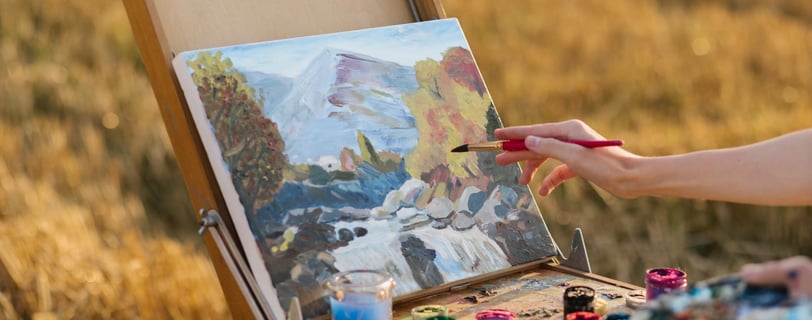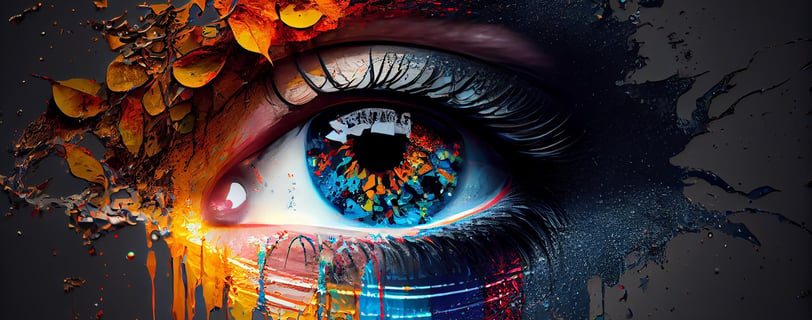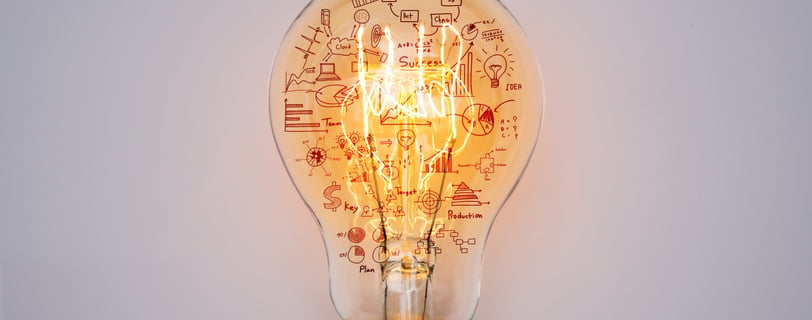Overcoming Creative Blocks: Tips to Get Inspired Again
Struggling with creative block? Discover effective techniques to break through mental roadblocks and spark fresh ideas.
INSPIRATION & MOTIVATION
10/21/20248 min read


Breaking Through Creative Blocks: Your Go-To Guide for Reigniting Inspiration
Let’s face it—creativity isn’t a faucet you can just turn on. Whether you’re a writer, artist, designer, or just someone with a knack for thinking outside the box, creative blocks can pop up unexpectedly and make you feel completely, well… stuck. It’s like your brain suddenly put up a “Do Not Enter” sign on your best ideas. But here’s the good news: these blocks are normal, they’re temporary, and you can break through them with the right approach.
In this guide, we’re diving into what creative blocks are, why they happen, and most importantly, how to conquer them with some tried-and-true strategies. Ready to get your creative spark back? Let’s go!
Understanding Creative Blocks: What They Are and Why They Happen
Before we tackle solutions, let’s look at what creative blocks are. Think of a creative block as a temporary mental roadblock. It’s when you’re feeling unmotivated, uninspired, or simply unsure where to begin. These blocks can show up in different ways, like:
1. Perfectionism: Waiting for “Flawless” Ideas
Ever had a project that felt so important you couldn’t start it until you were sure it would be “perfect”? That’s perfectionism, and it’s a creativity killer. Perfectionism puts intense pressure on every little decision, making it nearly impossible to enjoy the process or take creative risks.
2. Burnout: Creativity Fatigue
Think of your creativity as a well. The more you draw from it without refilling, the more likely it is to dry up. If you’ve been working non-stop on creative projects without taking breaks, burnout can sneak up on you, draining your energy and enthusiasm.
3. Fear of Failure: The Critic in Your Head
Sometimes, the fear of messing up is enough to stop us from even starting. The truth is, failure is a natural part of creativity—it’s how we learn and improve. But when that inner critic gets too loud, it’s easy to feel stuck, as if anything you create won’t be “good enough.”
4. Overthinking and Overwhelm: Paralysis by Analysis
Ever sat down with a million ideas buzzing in your head, but somehow ended up doing nothing? Overthinking can paralyze us, especially when we’re unsure which idea to pursue. The more options you have, the more overwhelming it can feel, and instead of choosing one, you end up choosing… none.
Understanding why creative blocks happen is the first step. Now, let’s explore some practical ways to get back on track and rediscover your creative flow.
1. Change Your Scenery: Give Your Creativity a Fresh View
If you’ve been staring at the same desk or screen every day, no wonder things feel a little stale! A change of environment can help reset your mind and spark new ideas.
Go Outside: There’s something magical about nature that clears your mind and opens it to new ideas. Take a walk, find a sunny park bench, or even work at a café with outdoor seating.
Rearrange Your Workspace: Move things around or add a new plant or artwork to your space. Sometimes, a simple change in your setup can shift your perspective.
Try a New Location: If you’re working from home, consider setting up in a different room or trying a new spot. Sometimes a change of scenery is all it takes to get the ideas flowing again.
Fun Tip: If you’re in a real rut, try a completely different environment—like a library, a coffee shop, or even a museum. You never know what random inspiration might strike!
2. Embrace a Creative Ritual to Get “In the Zone”
A creative ritual can be a great way to tell your brain, “Alright, it’s time to get inspired!” A ritual doesn’t have to be anything complex. It can be something as simple as making a cup of tea or lighting a candle before you start working.
Creative Ritual Ideas:
Morning Warm-Up: Start your day with 5-10 minutes of stretching or meditation to clear your mind. This can help reduce stress and create a fresh mental space for ideas.
Special Beverage: Brew a particular type of tea or coffee that you only drink when you’re doing creative work. Over time, your brain will associate this drink with creativity.
Music or Ambient Noise: Whether it’s a favorite playlist, instrumental music, or the sounds of a coffee shop, the right background noise can boost your focus and help you get in the creative zone.
Pro Tip: Try something like “morning pages” (a concept from The Artist’s Way by Julia Cameron), where you write a few pages of free-flowing thoughts every morning. It’s a great way to clear out mental clutter before diving into creative work.
3. Embrace the Art of Making “Bad” Art
The fear of failure can stop us from even beginning, but here’s a secret: not everything you create has to be a masterpiece. Sometimes, it’s about making things that are silly, messy, or just plain “bad” on purpose.
How to Let Go of Perfectionism:
Try Freewriting or Free Sketching: Set a timer for 10 minutes and write or draw without worrying about quality. This exercise isn’t about producing a final product; it’s about letting ideas flow without judgment.
Start with “Bad” Ideas: Try to come up with intentionally “bad” ideas. Sometimes, releasing yourself from high expectations can make room for good ideas to sneak in.
Set a Low Bar to Get Started: Aim to create just one rough draft, one paragraph, or one quick sketch. Often, just starting something—anything—can break the block.
Remember: Creativity is about exploration. Give yourself permission to make mistakes, and you might be surprised by the gems you find when you’re not trying so hard.
4. Limit Distractions and Protect Your Creative Time
In our hyper-connected world, distractions are everywhere, and they can pull you out of that “flow state” in an instant. To get back on track, it’s essential to create boundaries that help you stay focused.
Simple Strategies to Minimize Distractions:
Digital Detox: Put your phone on airplane mode or turn off notifications while you work. Apps like Forest or Freedom can help block distractions if you’re prone to scrolling.
Create Dedicated Creative Time: Set aside specific blocks of time for creative work and stick to them. Treat these time blocks like appointments that you can’t skip.
Set a Timer: Use the Pomodoro Technique (work for 25 minutes, then take a 5-minute break) to stay focused. This method helps you maintain momentum while also giving your brain a breather.
Quick Tip: If you’re finding it hard to focus, try adjusting your environment with some noise-canceling headphones, background music, or a change of scenery.
5. Experiment with a Different Creative Outlet
Sometimes, shaking up your usual creative process is just what you need. Trying something completely different can reawaken your creativity and bring a fresh perspective to your main work.
Switch Mediums: If you’re a writer, try painting or drawing. If you’re an artist, try creative writing or poetry.
Do Something Physical: Dance, do yoga, or go for a run. Physical movement can help release mental tension and spark fresh ideas.
Play with a Hobby: Take up knitting, cooking, or even DIY crafts. Engaging in a hands-on activity can sometimes lead to unexpected insights for your main creative work.
Creative Cross-Training: Trying new creative outlets can help your mind break out of its usual patterns, often leading to a “eureka” moment when you least expect it.
6. Collaborate with Others or Seek Feedback
Creativity doesn’t have to be a solo act. Collaborating with others or getting feedback can breathe new life into your work and open up fresh perspectives.
Ideas for Collaboration and Feedback:
Work with a Partner: Find someone to brainstorm or co-create with, even if it’s just a friend who doesn’t work in your field. A fresh set of ideas can take your work in exciting new directions.
Join a Workshop or Class: If collaboration isn’t available, consider joining an online workshop where you can learn new skills or techniques and get input from other creatives.
Ask for Honest Feedback: Show your work to a trusted friend or colleague. Sometimes, an outside opinion can help you see things in a new way or identify what’s working (or not).
Friendly Reminder: Feedback doesn’t mean you need to act on every suggestion. Take what resonates with you, and don’t be afraid to trust your own instincts.
7. Incorporate Playfulness and Randomness
Creativity is closely tied to playfulness. When you approach your work with a sense of play, you give yourself permission to take risks, explore new ideas, and even make mistakes.
Playful Exercises to Get Unstuck:
Word Prompts and Doodles: Use random prompts or draw doodles to loosen up. Let the prompts guide you in new directions, even if they seem unrelated to your main project.
Play with Random Connections: Write down random words or objects and try to connect them to your current project. The goal is to free your mind and get those creative juices flowing.
Use New Tools: Experiment with a tool or technique you’ve never used before. For instance, if you’re a digital artist, try creating something with watercolor or charcoal.
Idea Jar: Keep a jar with random prompts or ideas on your desk. Whenever you’re feeling stuck, pull one out and use it as a jumping-off point for something new.
8. Take a Break and Let Your Mind Wander
When all else fails, sometimes the best thing to do is to walk away. Creativity isn’t a machine; it needs rest just like we do. Giving your brain a break can often lead to those “aha” moments when you least expect them.
Restorative Break Ideas:
Go for a Walk: Nature has a way of refreshing the mind and giving it space to wander. Walking can help unlock ideas that are simmering just below the surface.
Practice Mindful Relaxation: Engage in activities like reading, listening to music, or daydreaming. Relaxation creates mental space for new ideas to emerge.
Get Some Good Sleep: A well-rested mind is a creative mind. If you’ve been struggling with a project, sleep can sometimes be the best cure.
Brain Recharge: Sometimes, ideas need to percolate. Don’t be afraid to step away and trust that your mind is still working on the problem in the background.
9. Set Small, Achievable Goals to Regain Momentum
Sometimes, it’s not the block itself that’s the problem—it’s the feeling of overwhelm. Breaking down your work into bite-sized tasks can help make the project feel manageable and keep you moving forward.
Mini-Goal Strategies:
Start with Just 5 Minutes: Tell yourself you only need to work for five minutes. Often, starting is the hardest part, and once you’re in motion, it’s easier to keep going.
Create Daily Mini-Goals: If you’re a writer, aim to complete just one paragraph. If you’re an artist, aim to sketch a quick thumbnail. Achieving small goals can build momentum.
Celebrate Progress: Take a moment to acknowledge every small step you complete. Building momentum is often about celebrating the little wins along the way.
Motivation Boost: Think of it like a game—each mini-goal is a “level” you’re completing. It’s fun, it’s motivating, and it keeps you moving forward.
Conclusion: Rediscovering Your Creative Spark
Creative blocks are a part of the journey, but they don’t define your creativity. By changing up your environment, trying playful techniques, collaborating with others, and allowing yourself time to recharge, you can work through these challenges and come out even stronger on the other side. Remember, creativity isn’t a straight line; it’s a winding path full of ups, downs, and unexpected turns.
The next time you’re feeling stuck, try one (or a few!) of these strategies and trust that your creative potential is always within reach. Here’s to breaking free, one playful step at a time!








